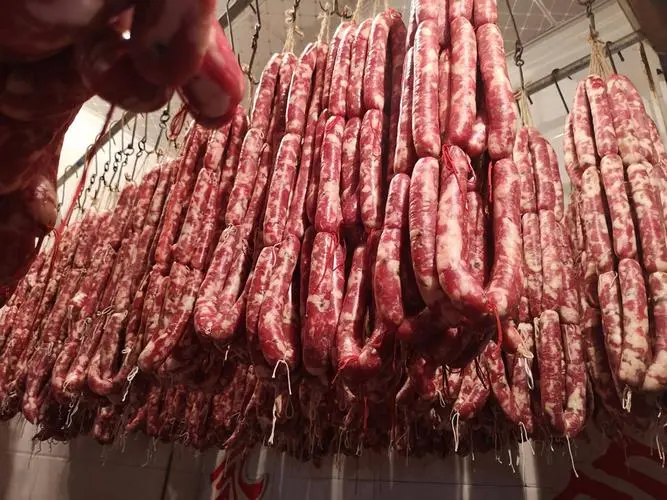
Oct . 07, 2024 19:22 Back to list
sausage processing line
The Sausage Processing Line From Raw Ingredients to Delicious Sausages
The sausage processing line is a sophisticated system that transforms raw ingredients into a variety of delicious sausage products
. This intricate process involves several stages, from sourcing high-quality meats and spices to packaging the finished products for distribution. Understanding this line not only highlights the efficiency of modern food production but also emphasizes the importance of quality control and safety in food processing.The journey begins with the selection of raw materials. High-quality meats, such as pork, beef, or poultry, are essential for producing tasty sausages. Suppliers must adhere to strict quality standards, ensuring that the meat is fresh and free from contaminants. Alongside meat, a variety of spices, fillers, and binders are chosen to achieve the desired flavor and texture. Some production lines even include vegetarian or vegan options, using plant-based proteins to cater to a broader audience.
Once the ingredients are procured, the sausage processing line kicks into gear. The first step is the grinding of the meat. This is accomplished with heavy-duty meat grinders that ensure uniformity in texture. The grinding process is crucial, as it affects the final product's mouthfeel. Next, a precise mix of spices and additives is blended in to create the sausage's unique flavor profile. This mixing process is typically automated, utilizing advanced technology to ensure consistency and efficiency.
Following the mixing stage, the blended meat is moved to the stuffing station. Here, casings—either natural or synthetic—are filled with the seasoned meat mixture. The choice of casing impacts the texture, taste, and overall quality of the sausage. Skilled operators closely monitor this process to prevent air pockets, which can compromise the sausage's integrity. Once the casings are stuffed to the desired dimensions, the sausages are twisted into links and secured.
sausage processing line

After stuffing, sausages often undergo a critical cooking or smoking phase. This step not only enhances the flavor but also ensures food safety by killing harmful bacteria. There are various methods for cooking sausages, including steaming, boiling, or smoking, and the choice depends on the type of sausage being produced. For example, smoked sausages impart a distinctive flavor that many consumers find irresistible.
Upon completion of cooking, sausages are cooled to maintain freshness and quality. This stage is followed by packaging, where the sausages are vacuum-sealed or packed in modified atmosphere packaging (MAP) to extend shelf life. Proper labeling is also crucial, providing consumers with essential information such as ingredients, nutritional facts, and expiration dates.
Quality control is an ongoing process throughout the sausage production line. Regular inspections and testing ensure that each batch meets the established safety and quality standards. Any deviations from these standards can prompt immediate corrective actions to safeguard consumer health.
In conclusion, the sausage processing line is a marvel of modern food technology. It represents a blend of traditional methods and cutting-edge techniques, all aimed at delivering high-quality sausages to consumers. As the demand for diverse and flavorful sausage options continues to grow, the sausage processing industry will undoubtedly evolve, embracing new trends and technologies while staying true to the art of sausage making. Whether enjoyed grilled, in sandwiches, or as part of a hearty breakfast, sausages remain a beloved staple in many diets around the world.
Latest news
-
Pneumatic Clipping Machine - Shijiazhuang Bossin Machinery Equipment Co., Ltd.|Precision, Efficiency, Innovation
NewsAug.03,2025
-
Sausage Link Cutter JC999-03 | Fast & Precise Sausage Slicing Tool
NewsAug.03,2025
-
Pneumatic Clipping Machine- Shijiazhuang Bossin Machinery Equipment Co., Ltd.|Sausage Production Line, High Efficiency
NewsAug.03,2025
-
Pneumatic Clipping Machine - Shijiazhuang Bossin Machinery Equipment Co., Ltd.|Sausage Production Line, Efficient Meat Processing
NewsAug.03,2025
-
Pneumatic Clipping Machine-Shijiazhuang Bossin Machinery|Precision Efficiency
NewsAug.03,2025
-
Pneumatic Clipping Machine-SHJZ Bossin Machinery | High Efficiency&Flexible Operation
NewsAug.02,2025